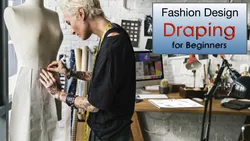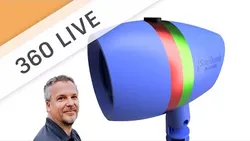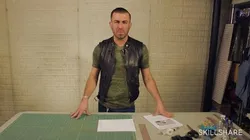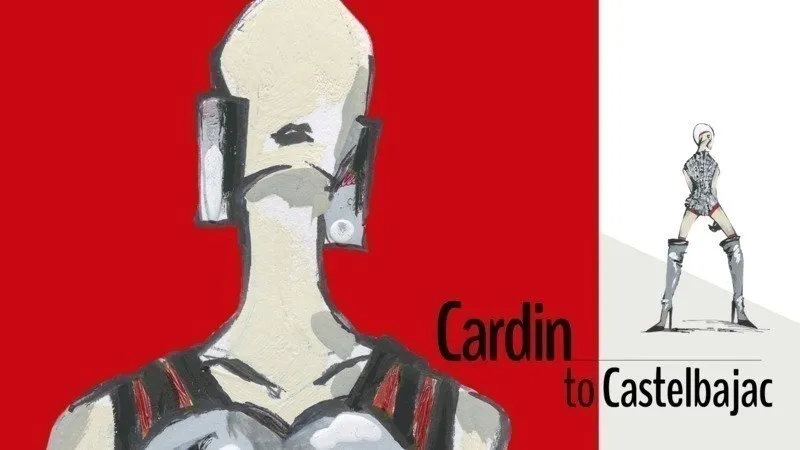
Fashion Design - DRAPING - Learn basic techniques (and some complex) to create new fashion ideas 
This beginner class in Fashion Design teaches students the basics of draping, as well as some more advanced techniques. Through this course, students will gain the skills to create new fashion ideas and develop their own designs. They will learn how to use draping to create basic bodices, skirts, dresses, and more. This course is perfect for those looking to expand their fashion design skills. ▼
ADVERTISEMENT
Course Feature
![]() Cost:
Cost:
Free Trial
![]() Provider:
Provider:
Skillshare
![]() Certificate:
Certificate:
No Information
![]() Language:
Language:
English
![]() Start Date:
Start Date:
On-Demand
Course Overview
❗The content presented here is sourced directly from Skillshare platform. For comprehensive course details, including enrollment information, simply click on the 'Go to class' link on our website.
Updated in [February 21st, 2023]
A beginner Class with basic (and some advanced) techniques to create new fashion design ideas. Learn draping skills to further develop and add to your Fashion Design process.
Draping is used to develop basic Bodice, basic Skirt, basic Dress, a Circle Skirt, etc. Students will learn how to manipulate muslin, create darts, how to mark muslin, which is then be used to draft a pattern. Included in the curriculum is:
Working with a Dress Form
Working with muslin
Creating a Dart
Creating gathers/shirring
Draping a One-Dart Bodice
Draping a Two-Dart Bodice
Draping a Basic Skirt
Draping a Circle Skirt
Draping a Basic Dress
Tools needed for draping
The draping process is a very creative technique with
inspires and empowers
the student to be more creative, innovative and have fun in the process. Learning how to Drape is an intuitive and spontaneous way to create new designs and come up with new ideas.
Learning how to be a great fashion designer includes the learning of the Draping process and technique. The use of fabric as a way to "mold" it to a dress form is inspiring and creative when it comes to inventing new designs for that famous
"Red Carpet Event"
known as
"The Oscars"
-- those designs worn by those Celebrities were once Draped on a Dress Form.
Those beautiful evening gowns seen on the "Red Carpet" most likely were draped first, then through the process of fitting them on the actual body of the person wearing it, refined and perfected to fit correctly.
This Course starts with the basics: draping the basic bodice: One-Dart and Two-Dart Bodice, but then it moves into using more complex techniques such as draping the
"Circle Skirt"
which requires a little more practice to perfect.
This Course aims not only to teach, but also inspire students to use Draping techniques to be creative, innovative, and become a great
Fashion Designer.
[Applications]
Upon completion of this course, students will have the knowledge and skills to apply the draping techniques they have learned to create new fashion designs. They will be able to use the dress form to manipulate muslin, create darts, and mark muslin to draft a pattern. Students will also be able to use more complex techniques such as draping a circle skirt. With the knowledge and skills acquired, students will be able to be creative, innovative, and become a great fashion designer.
[Career Paths]
The career paths recommended to learners of this course are:
1. Fashion Designer: Fashion designers create clothing and accessories for consumers. They use their knowledge of fabrics, colors, and trends to create designs that are both fashionable and functional. As fashion trends continue to evolve, fashion designers must stay up-to-date on the latest trends and be able to create new designs that meet the needs of their customers.
2. Pattern Maker: Pattern makers use draping techniques to create patterns for garments. They use their knowledge of fabrics, colors, and trends to create patterns that are both fashionable and functional. They must be able to interpret the designs of fashion designers and create patterns that accurately reflect the designer's vision.
3. Textile Designer: Textile designers create fabrics and textiles for clothing and accessories. They use their knowledge of fabrics, colors, and trends to create fabrics that are both fashionable and functional. As fashion trends continue to evolve, textile designers must stay up-to-date on the latest trends and be able to create new fabrics that meet the needs of their customers.
4. Costume Designer: Costume designers create costumes for theater, film, television, and other productions. They use their knowledge of fabrics, colors, and trends to create costumes that are both fashionable and functional. As fashion trends continue to evolve, costume designers must stay up-to-date on the latest trends and be able to create new costumes that meet the needs of their customers.
Pros & Cons

Clear and easy to follow instruction

Engaging and enthusiastic instructor

Demystifies the concept of draping

Great for beginners

Valuable skill for garment construction

Fun and creative process

No bias cuts taught

No sewing instruction provided
Course Provider

Provider Skillshare's Stats at AZClass
Discussion and Reviews
0.0 (Based on 0 reviews)
Explore Similar Online Courses

Healthcare statistics with SPSS

Laser Projector Project

Python for Informatics: Exploring Information

Social Network Analysis

Introduction to Systematic Review and Meta-Analysis

The Analytics Edge

DCO042 - Python For Informatics

Causal Diagrams: Draw Your Assumptions Before Your Conclusions

Whole genome sequencing of bacterial genomes - tools and applications

Make Your Own Clothing: Introduction to Garment Construction

Gaultier to Louboutin: Style & Strategy in French Fashion


Start your review of Fashion Design - DRAPING - Learn basic techniques (and some complex) to create new fashion ideas